Discover 20 hidden attractions, cool sights, and unusual things to do in Curitiba (Brazil). Don't miss out on these must-see attractions: Botanical Garden of Curitiba, Museu Oscar Niemeyer, and Autódromo Internacional de Curitiba. Also, be sure to include Wire Opera House in your itinerary.
Below, you can find the list of the most amazing places you should visit in Curitiba (Paraná).
Table of Contents
Botanical Garden of Curitiba
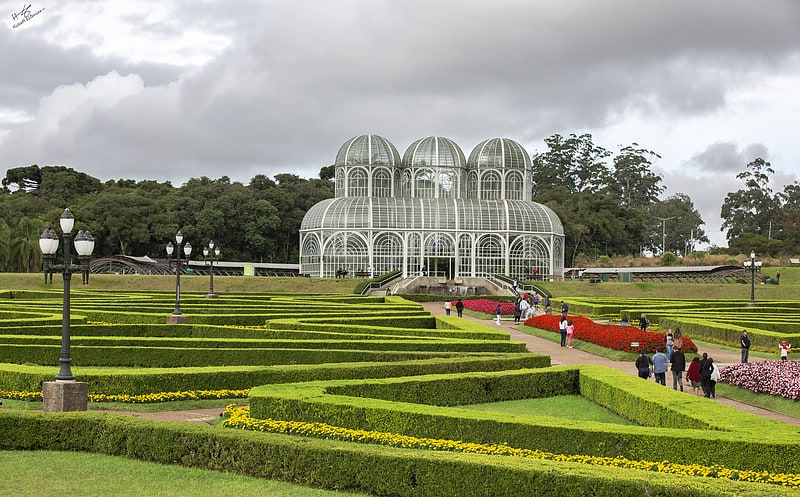
Also known as: Jardim Botânico de Curitiba
Modern garden for primarily native flora. The Jardim Botânico de Curitiba, in Portuguese, or the Botanical Garden of Curitiba, in English, also known as the "Jardim Botânico Fanchette Rischbieter", is a park located in the city of Curitiba - the capital of the state of Paraná, and the biggest city in southern Brazil. It is the major tourist attraction and landmark of the city, and it houses part of the campus of the Federal University of Paraná. The international identification code is CURIT.
Opened in 1991, Curitiba's trademark botanical garden was created in the style of French gardens. Once by the portal of entry, one may see extensive gardens in the French style amidst fountains, waterfalls and lakes, and the main greenhouse of 458 square meters, which shelters in its interior, specimens of plants characteristic of tropical regions. It rolls out its carpet of flowers to the visitors right at the entrance. The park occupies 240.000 m² in area. The principal greenhouse, in an art nouveau style with a modern metallic structure, resembles the mid-19th century Crystal Palace in London. The Botanic Museum, which provides a national reference collection of native flora, attracts researchers from all over the world. It includes many botanic species from the moist Atlantic Forests of eastern Brazil.
The native forest is filled with paths for strolling. Behind the greenhouse is the Museum of Franz Krajcberg, the Polish Brazilian artist who took up the cause of environmental conservation; with 1,320 square meters of area, divided into multimedia classrooms, an auditorium with 60 seats and lounge with several exhibitions of works donated by visual artists, represented by sculptures and reliefs, as well as photographs, videos, publications and educational materials.
In the other side of the park is the Botanical Museum, a wooden building whose main entrance is reached through a wooden bridge. The Botanical Museum of Curitiba has the fourth largest herbarium in the country. In front of the construction there is a pond with carp, turtles, herons, etc. and around the building there is a lake, an auditorium, a library, an expositions area, a theatre, tennis courts and a cycle track.[1]
Address: R. Engo. Ostoja Roguski, 80210-390 Curitiba (Regional Matriz)
Museu Oscar Niemeyer
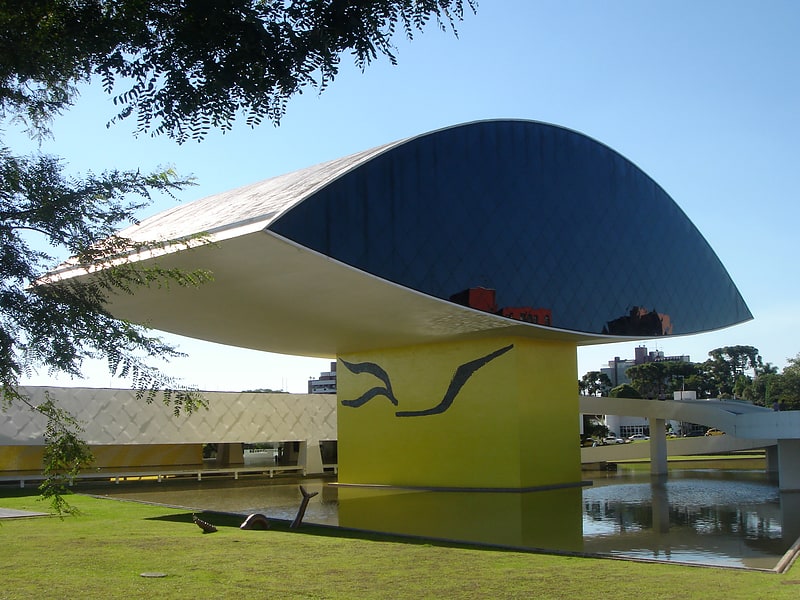
Contemporary art and design museum. The Oscar Niemeyer Museum is located in the city of Curitiba, in the state of Paraná, in Brazil. It was inaugurated in 2002 with the name Novo Museu or New Museum. With the conclusion of remodeling and the construction of a new annex, it was reinaugurated on July 8, 2003, with the current denomination to honor its famous architect who completed this project at 95 years of age. It is also known as Museu do Olho or Niemeyer's Eye, due to the design of the building.
The museum focuses on the visual arts, architecture and design. For its magnificence, beauty and for the importance of the collection, it represents a cultural institution of international significance. The complex of two buildings, installed in an area of 35 thousand square meters (of which 19 thousand are dedicated to exhibition space), it is a true example of architecture allied with art. The first building was designed by Oscar Niemeyer in 1967, faithful to the style of the time, and conceived as an educational institute, which was opened in 1978.
The museum features many of Niemeyer's signature elements: bold geometric forms, sculptural curved volumes placed prominently to contrast with rectangular volumes, sinuous ramps for pedestrians, large areas of white painted concrete, and areas with vivid murals or paintings. Though rooted in modern architecture since his involvement in the international style, Niemeyer's designs have much in common with postmodern architecture as well and this is as contemporary a building as the artwork it displays.[2]
Address: R. Mal. Hermes, 999, 80530-230 Curitiba (Regional Matriz)
Autódromo Internacional de Curitiba
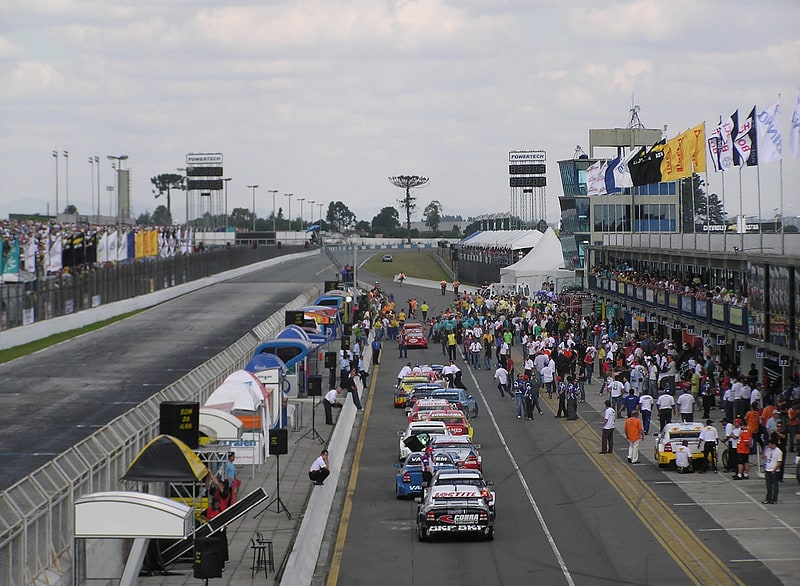
Car racing track in Pinhais, Brazil. Autódromo Internacional de Curitiba was a motorsports circuit located in Pinhais, Brazil. It has been host to the World Touring Car Championship, TC2000, Fórmula Truck and Stock Car Brasil racing. Until 2013 the circuit has also been host of the South American Formula 3 Series, namely the Formula 3 Sudamericana. The circuit also formerly hosted the Brazilian Formula Three Championship.
The circuit also hosted the "Festival Brasileiro de Arrancada", from 1992 to 2016, which was the biggest drag racing event in Latin America.[3]
Address: Avenida Irai 16, 83321-000 Pinhais
Wire Opera House
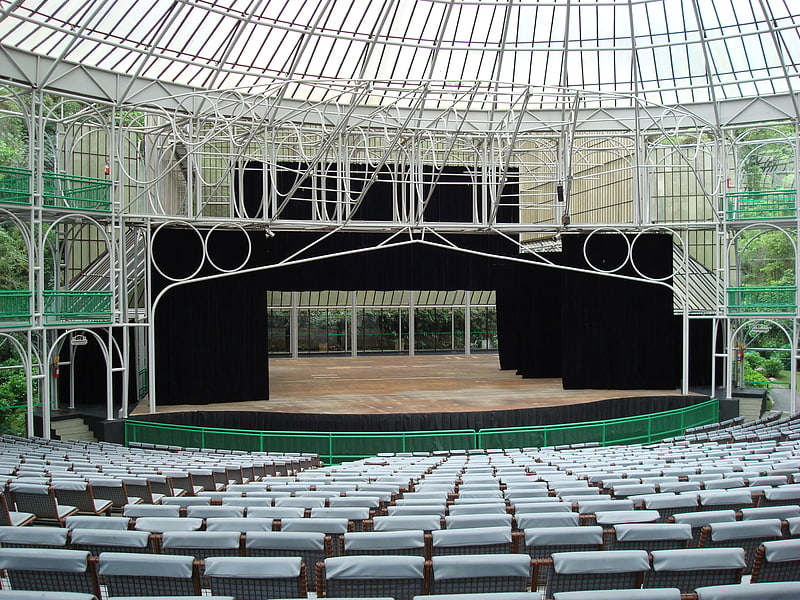
Also known as: Ópera de Arame
Modern opera house made of wire. The Ópera de Arame, in Portuguese, or the Wire Opera House, in English, is a theatre house located in the city of Curitiba, the capital of the state of Paraná, in southern Brazil. It is one of the major tourist attractions of the city. The opera house has a capacity of 2,400 spectators.
Situated in the middle of an urban green park, Parque das Pedreiras, the Wire Opera House theatre is built out of steel tubes. It is built on the site of a former rock quarry close to "Pedreira de Paulo Leminski." The structure is found in the middle of an artificial lake and accessed by a walkway. Designed by Domingos Bongestabs, the metallic structure weighs a total of 360T of steel. The structure was built in 75 days and opened on March 18, 1992. It underwent many changes until 2006. The idea was to present outdoor shows with a new and innovative perspective.[4]
Address: Rua Joao Gava, 82130-010 Curitiba (Regional Boa Vista)
Cathedral Basilica Minor of Our Lady of Light
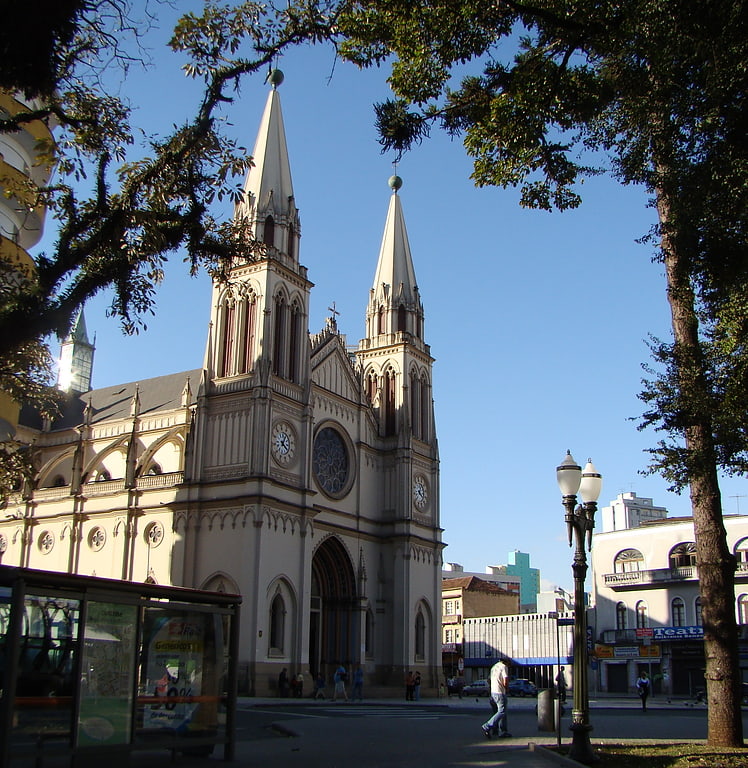
Also known as: Catedral Basílica Menor de Nossa Senhora da Luz dos Pinhais
Cathedral in Curitiba, Brazil. The Cathedral Basilica Minor of Our Lady of Light, also called Curitiba Cathedral, is a Catholic church in the city of Curitiba, in the state of Parana in Brazil. In 1668, a small wooden church was built on the site, in the old town of Curitiba today, with a church dedicated to Our Lady of Light and Jesus.
In 1693, the City Council was established in the place in order to elect the first municipal authorities. On March 29 of the same year, the foundation of the town of Nossa Senhora da Luz e do Bom Jesus dos Pinhais Curitiba became official.
Years later, it gave way to a larger church in stone and clay, completed in 1721, called the church headquarters. That, in turn, was demolished between 1875 and 1880, to finally build the present cathedral, which work was carried out between 1876 and 1893.[5]
Address: R. Barão do Serro Azul, 31, 80020-180 Curitiba (Regional Matriz)
Arena da Baixada
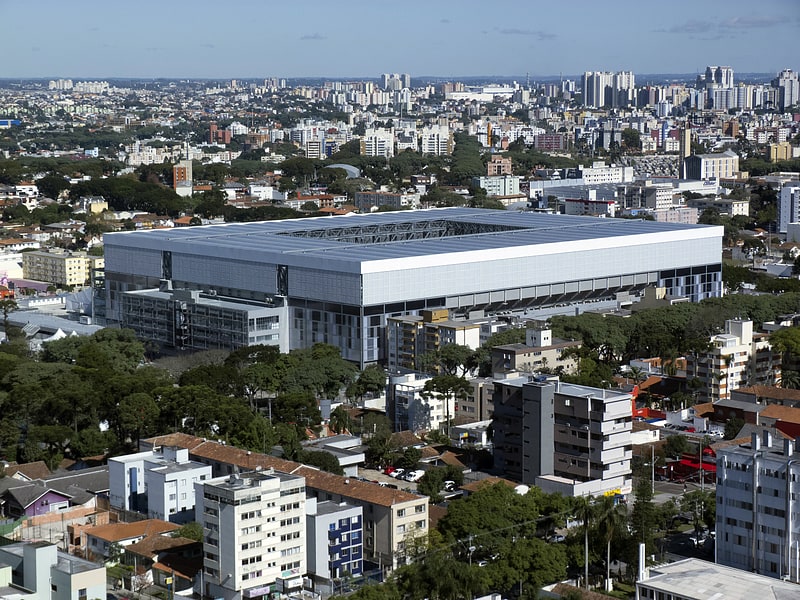
Also known as: Estádio Joaquim Américo Guimarães
Arena in Curitiba, Brazil. Estádio Joaquim Américo Guimarães, known commonly as Arena da Baixada, is a stadium located in Curitiba, the state capital of Paraná, Brazil. It is the home stadium of Club Athletico Paranaense, and has a capacity of 42,372 people. The stadium was the first in Brazil to sell its naming rights; it was known as Kyocera Arena between 2005 and 1 April 2008. It was the first retractable roof stadium built in South America.
With Curitiba selected as one of the host cities of the 2014 FIFA World Cup, the stadium was rebuilt between 2012 and 2014. Its capacity was expanded to 42,372 seats.
Located in the Água Verde borough near the center of Curitiba, the history of the stadium began in the early twentieth century, when in 1914, Joaquim Américo Guimarães, then president of the International (the forefathers of Club Athletico Paranaense), led the construction of the then Arena da Baixada stadium. Athletico came into existence ten years later, inheriting the assets, including the stadium.[6]
Address: Rua Buenos Aires 1260, 80250-070 Curitiba (Regional Portão)
Curitiba Brazil Temple
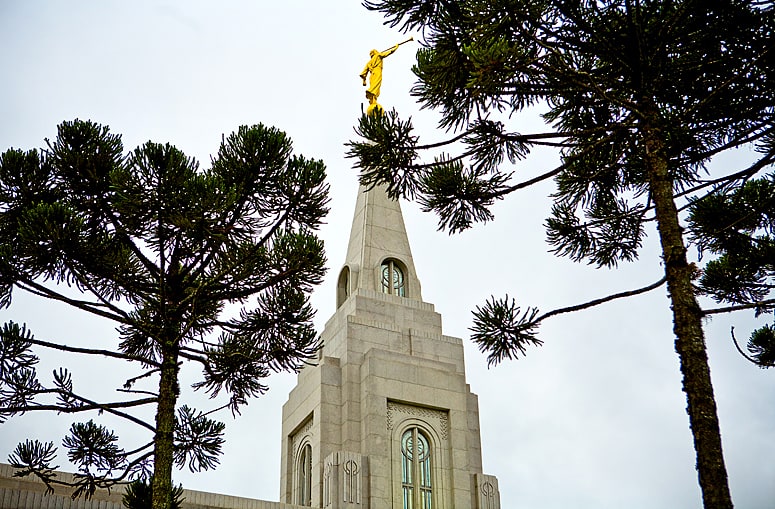
Also known as: Templo de Curitiba
Temple in Curitiba, Brazil. Curitiba Brazil Temple is the 126th dedicated temple in operation of The Church of Jesus Christ of Latter-day Saints.[7]
Address: Rua Deputado Heitor Alencar Furtado 3641, 81200-528 Curitiba (Regional Portão)
Bosque Alemão
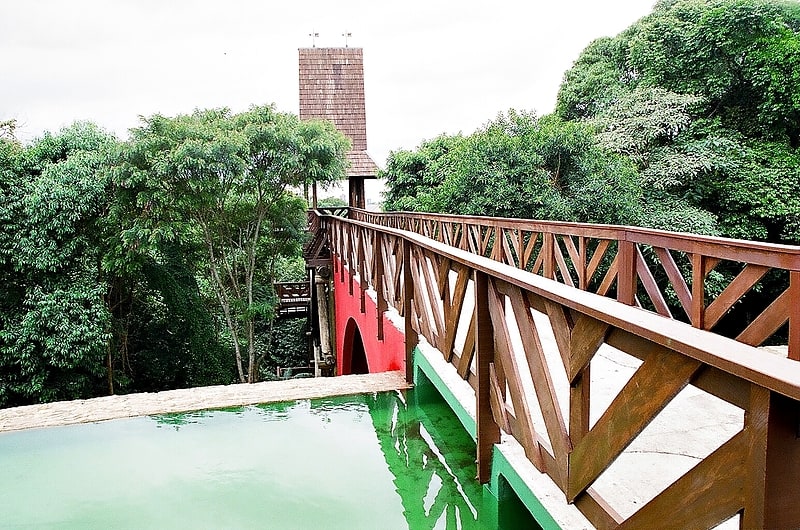
Fairground in Curitiba, Brazil. Bosque Alemão is a park built in Curitiba in honor of the German immigrants who begin to settle in the city in the early 19th century.
In the park visitors can walk on the trail of Hansel and Gretel (after the tale of Brothers Grimm) and reach the gingerbread and candy house, where usually on Saturday afternoons children listen to tales told by the crone that lives in the famous Brothers Grimm tale.[8]
Address: Rua Francisco Schaffer, 80820-200 Curitiba (Regional Santa Felicidade)
Teatro Guaíra

Building in Curitiba, Brazil. The Teatro Guaíra Cultural Centre is a state-run cultural institution located in Curitiba, Paraná.
Its building, located at Santos Andrade square, shelters about 3,000 seats in three different auditoria, being one of the largest concert halls in Latin America.
Some of the artists' groups maintained by Teatro Guaíra Culture Centre are: the Symphony Orchestra of Paraná, the "Balé Teatro Guaíra" (dance company) and the "Teatro de Comédia do Paraná" (theater group).[9]
Address: Rua XV de Novembro 971, 80060-000 Curitiba (Regional Matriz)
Pedreira Paulo Leminski
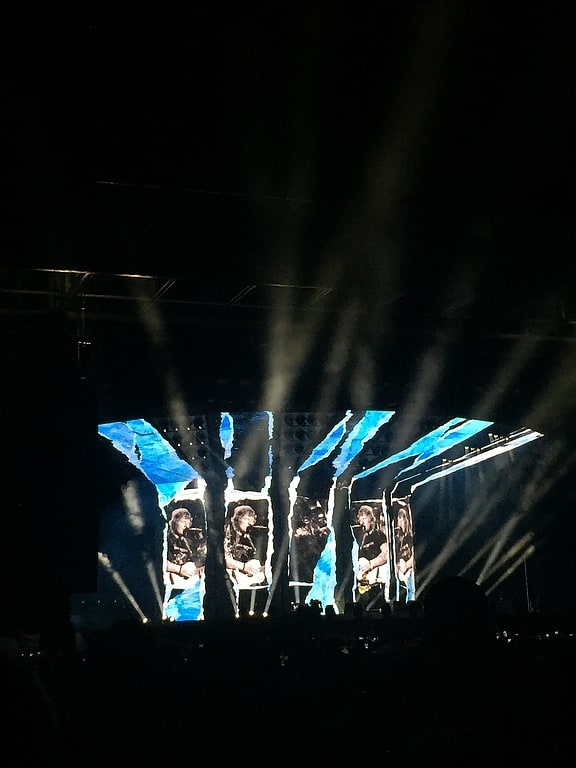
Event venue in Curitiba, Brazil. The Pedreira Paulo Leminski is a 25,000 capacity outdoor concert venue located in Curitiba, Brazil. It was partly named after Paulo Leminski, a twentieth century Brazilian writer, and because it served as a Municipal Pedreira, an asphalt plant. Located in the neighborhood of Pilarzinho, the site is about 103,500 metres long, its stage is around 480m², and it is surrounded by a wall of rock thirty meters high. It was first opened in 1990.
It is located near the quarry is the Wire Opera House, which was opened in 1992 for the first Festival of Theater of Curitiba. Together, the two sites make up the Parque das Quarries.
In July 2008, the holding of large events was prohibited in the place by an injunction in a Public Civil Action filed by the Public Ministry of Paraná, based on a request from the residents of the region, who alleged disrespect for the schedule of shows and riots. caused by visitors. After a legal dispute between the space's neighbors and the municipal government, which had taken place since 2008, an agreement was reached, which included a renovation with new adaptations and some restrictions for shows and, thus, the quarry was released in September 2013. With the improvements made, at a cost of R$ 17 million, the space was reopened in March 2014.[10]
Address: Rua Joao Gava, 82130-010 Curitiba (Regional Boa Vista)
Bosque de Portugal
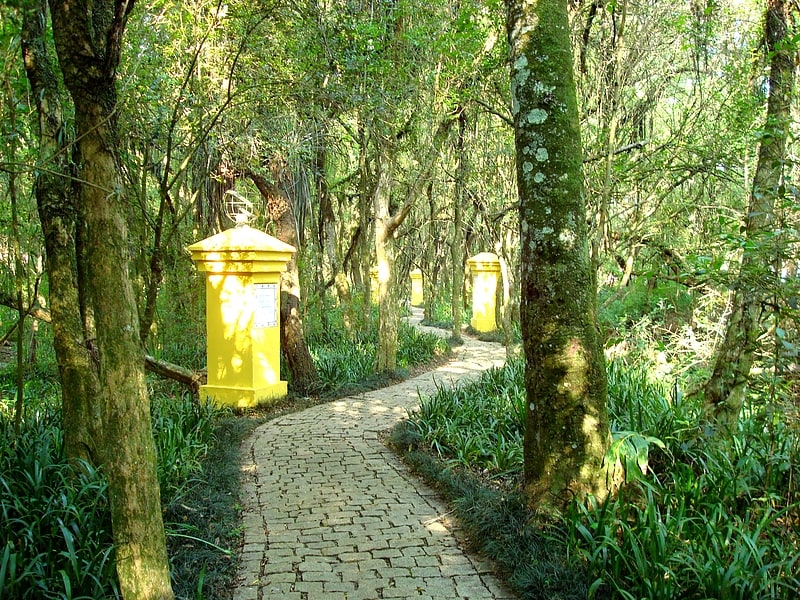
Park in Curitiba, Brazil. Bosque de Portugal is a public park located in the city of Curitiba, capital of the state of Paraná, Brazil.[11]
Address: R. Fagundes Varela, 82520-040 Curitiba (Regional Matriz)
Capão da Imbuia Wood
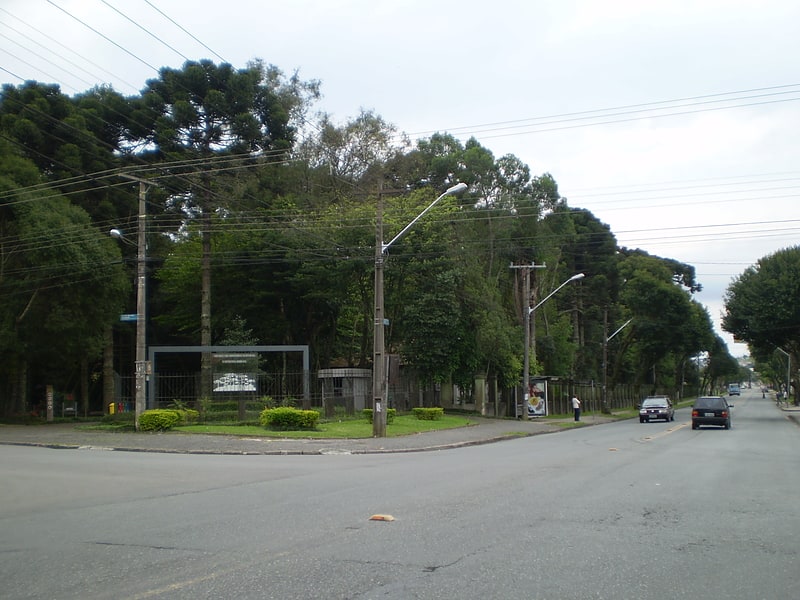
Also known as: Bosque do Capão da Imbuia
The Capão da Imbuia Woods is a public area of the city of Curitiba, the capital of the state of Paraná, in Brazil.
With a large expanse of native forest (39,000 m²), the woods have several features, such as a path in the woods known as "Path of the Araucaria", a metal catwalk that loops around the woods, and the "Museum of Natural History", with stuffed animals, skeletons, pictures and many more exhibits that show the typical fauna and flora of Brazil. The woods also house a closed biological research site.
The place is also known for its large population of native agoutis, which live freely on the woods. The woods serve as breeding grounds for them, and from times to time the mayor hall reintroduces the species in other woods and parks around the city.
The woods are home to the oldest tree in the city, an Ocotea porosa almost a thousand years old.[12]
Address: Rua Professor Benedito Conceicao 407, 82810-080 Curitiba (Regional Cajuru)
Paiol Theater

Teatro Paiol is an arena theater located in the city of Curitiba, capital of the state of Paraná, Brazil.
Its address is at the Prado Velho district, at Professor Guido Viaro Square.
Address: Largo Professor Guido Viaro, 80215-180 Curitiba (Regional Matriz)
Holocaust Museum in Curitiba
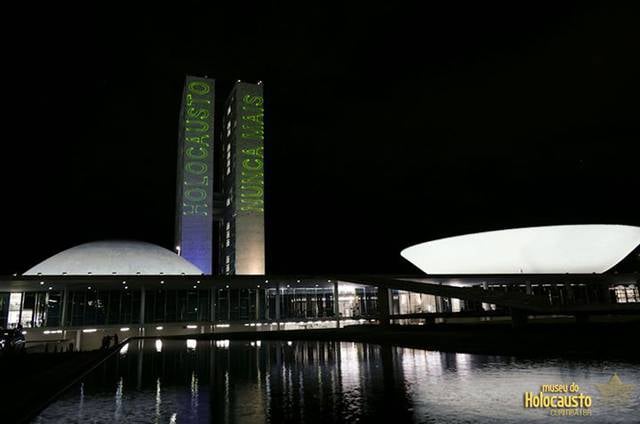
Also known as: Museu do Holocausto de Curitiba
Museum in Curitiba, Brazil. The Holocaust Museum in Curitiba is a museum situated in the city of Curitiba, capital of the Brazilian state of Paraná.
It was the first of that theme in Brazil, aiming to keep alive the memory of the Holocaust through the memory of its victims and its survivors.
Conceived by the Associação Casa de Cultura Beit Yaacov, the museum was raised at an area of about 400 square meters, next to the Centro Israelita do Paraná, at the building of the new synagogue Beit Yaacov, at the center of Curitiba.
The visitation schedule is arranged in advance. Tour guides are available free of charge. Audiovisual resources are used to tell some of the history that led to the Holocaust and its impact and consequences on the Jewish People. A full list of the names of the Righteous Among the Nations is also in display.
The museum was conceived by Miguel Krigsner, president of the Associação Casa de Cultura Beit Yaacov and founder of the Brazilian cosmetics group O Boticário, in partnership with Base7 Projetos Culturais.
Historical research took place between November 2009 and 2011. Execution began in March 2011. Contributors of audiovisual material include several Brazilian and foreign institutions interested in the preservation of the memory, education and research connected to the Holocaust, among them Yad Vashem; the United States Holocaust Memorial Museum in Washington, DC; the USC Shoah Foundation Institute for Visual History and Education; the Auschwitz-Birkenau State Museum; Majdanek; the Mémorial de la Shoah in Paris, France; and the Cultural Institute Soto Delatorre.
Present at the official inauguration ceremony on November 20, 2011, were the Brazilian Secretary for Human Rights Maria do Rosário; Paraná's governor, Beto Richa; Israel's ambassador, Rafael Eldad; and Mayor Luciano Ducci. About 800 people participated of the ceremony, including also Israel's consul general for São Paulo, Ilan Sztulman; former governor Jaime Lerner; Claudio Lottenberg, the head of the Confederação Israelita do Brasil (CONIB); the president of the Israelite Federation in Paraná, Manoel Knophfolz; the Archbishop of Curitiba, Moacyr José Vitti; and survivors and descendants of survivors from the holocaust such as Ben Abraham and George Legmann.[13]
Address: Rua Coronel Agostinho Macedo 248, 80520-100 Curitiba (Regional Matriz)
Museu de Arte Contemporânea do Paraná
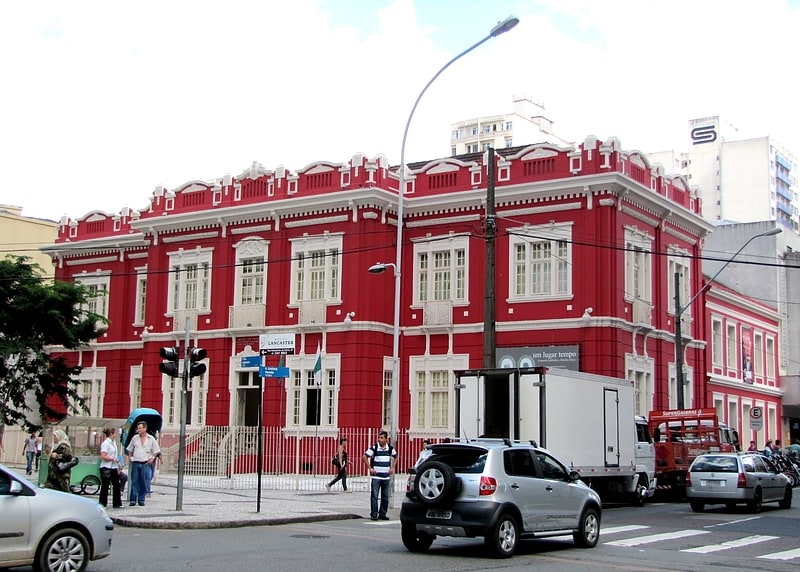
The Museum of Contemporary Art of Paraná is an entity maintained by the government of Paraná, which has in its collection paintings, sculptures, drawings, engravings and other types of works by various Brazilian artists, especially artists from Paraná.
Address: Rua Desembargador Westphalen 16, 80010-110 Curitiba (Regional Matriz)
Tiradentes Square

Relax in park, Park
Universidade Positivo
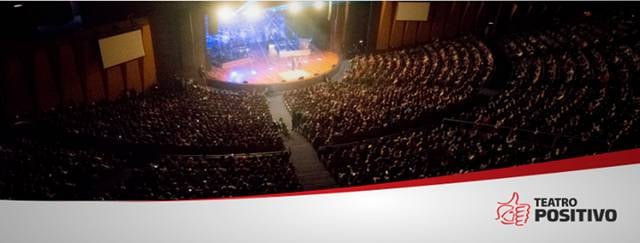
Private university in Curitiba, Brazil. The Universidade Positivo is a private universities of the State of Paraná, Brazil.
Universidade Positivo's campus is in the Campo Comprido district of Curitiba and occupies an area of more than 400,000 m2
Universidade Positivo offered (as of beginning of 2013) 27 undergraduate programs, more than 50 postgraduate programs, four master's degree programs, two doctoral programs.
As of summer of 2020, the university offered more than 60 Undergraduate courses, hundreds of Specialization and MBA programs, seven Master's and Doctorate programs, as well as continuing education courses and extension programs. Also, it has seven free service clinics.
The library can host up to 865 people. Its collection consists of nearly 115,000 volumes. In a special room the library houses the personal collection of the late cabinet minister, diplomat and professor, Roberto de Oliveira Campos. It includes diplomas, medals and awards, in addition to its 8,426 volumes.[14]
Address: R. Prof. Pedro Viriato Parigot de Souza, 5300, Curitiba (Regional Cidade Industrial de Curitiba)
Museu Paranaense

The Paranaense Museum is a Brazilian museum based in Curitiba, capital of the state of Paraná.
Address: Rua Kellers 289, 80410-100 Curitiba (Regional Matriz)
Alfredo Andersen

Museum, Specialty museum
Address: Rua Mateus Leme 336 - Centro, 80510-190 Curitiba (Regional Matriz)
Pinhais
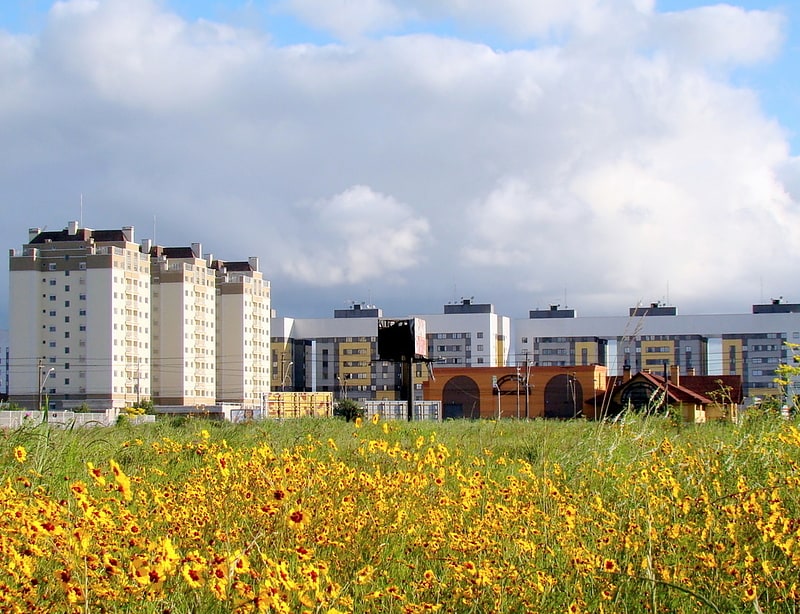
Municipality in Brazil. Pinhais is a municipality in Paraná state in Brazil. As of 2020, the population was 133,490. It was emancipated from the municipality of Piraquara in 1992 and is part of the metropolitan region of Curitiba. It is the smallest municipality in Paraná by area. In its territory lies the Autódromo Internacional de Curitiba and the Expotrade Arena.[15]